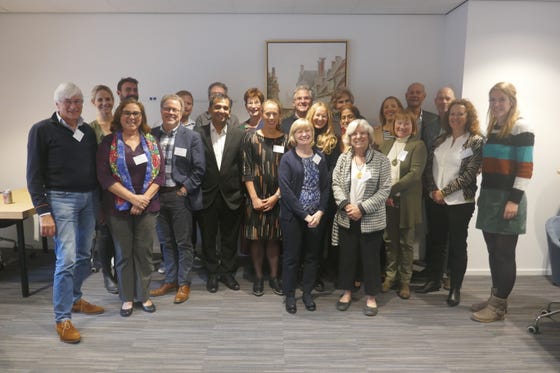Evaluating international Haemophilia Joint Health Score (HJHS) results combined with expert opinion: Options for a shorter HJHS
Kan de HJHS gewrichtsscore korter?

HJHS Expert meeting - Utrecht (2019)
Tijdschrift
Haemophilia (2020); 2020;00:1–9.
Auteurs
I. Kuijlaars, J. van der Net, B. Feldman et al.
Samenvatting in het Nederlands
De Hemophilia Joint Health Score (HJHS) is een gewrichtsscore van de enkels, knieën en ellebogen om de gezondheid van de gewrichten van mensen met hemofilie te meten. Een fysiotherapeut of arts beoordeelt de gewrichten tijdens een lichamelijk onderzoek op 9 onderdelen, maar dit kost (te) veel tijd. Daarom is in deze studie gekeken of de HJHS korter gemaakt kan worden. Gewrichtsscores van 499 internationale patiënten zijn geanalyseerd en dit is vervolgens besproken in een bijeenkomst met 19 internationale experts. De conclusie is dat 2 van de 9 onderdelen van de HJHS weggelaten kunnen worden, namelijk hoe lang zwelling van het gewricht duurt en crepitatie (krakend geluid tijdens bewegen) van het gewricht. Een volgende stap zal zijn om te kijken of we kunnen screenen welke gewrichten in detail bekeken moeten worden. Het uiteindelijke doel is om efficiënt en nauwkeurig de gezondheid van gewrichten in kaart te brengen.
Het hele artikel van dit onderzoek is hier te vinden (Engels): https://doi.org/10.1111/hae.14180.
Naar aanleiding van dit artikel is onderzoeker Isolde Kuijlaars geïnterviewd door Magnus Aspdahl van de EAHAD Physiotherapists Committee. Bekijk hier de video van het interview.
English summary
The Hemophilia Joint Health Score (HJHS) is a score for joint health of the ankles, knees and elbows. A physical therapist or medical doctor scores the joints on 9 items during physical examination, which takes too much time. Therefore, the goal of our study was to shorten the HJHS. Joint scores of 499 patients with hemophilia were analyzed and the results were discussed in an expert meeting with 19 international experts. The conclusion of the study was that 2 out of 9 items of the HJHS could be removed, namely the duration of joint swelling and crepitus (a cracking noise during movement) of the joint. A next step is to explore if we can screen which joints need full joint assessment. The final goal is a time efficient and reliable joint assessment.
The full article of this study can be found here (English): https://doi.org/10.1111/hae.14180.
Researcher Isolde Kuijlaars was invited for an interview by Magnus Aspdahl of the EAHAD Physioterapists Committee to discuss the findings of her article. Please follow the link to watch the video of the interview.
